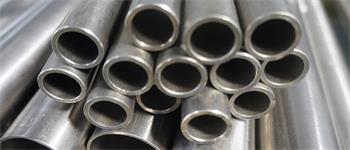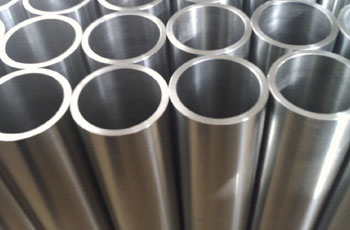316 stainless steel pipe

Stainless steel pipe is a hollow strip of round steel, which is widely used in petroleum, chemical, medical, food, light industry, mechanical instrumentation and other industrial pipelines and mechanical structural components.
In addition, when the bending and torsional strength are the same, the weight is light, so it is also widely used in the manufacture of mechanical parts and engineering structures. Also used as furniture and kitchenware.
Stainless steel tube hardness
Stainless steel pipes are generally measured by three hardness indexes: Brinell, Rockwell and Vickers.
Stainless steel tube – Brinell hardness
Among the stainless steel pipe standards, Brinell hardness is the most widely used, and the hardness of the material is often expressed by the indentation diameter, which is both intuitive and convenient.
However, it is not suitable for steel pipes of harder or thinner steel.
Stainless steel tube – Rockwell hardness
The stainless steel tube Rockwell hardness test is the same as the Brinell hardness test. The difference is that it measures the depth of the indentation.
The Rockwell hardness test is a widely used method in which HRC is used second only to Brinell hardness HB in steel pipe standards.
Rockwell hardness can be applied to the determination of metal materials from extremely soft to very hard. It compensates for the Brinell method. It is simpler than the Brinell method and can directly read the hardness value from the dial of the hardness machine.
However, due to its small indentation, the hardness value is not as accurate as the Brinell method.
Stainless steel tube – Vickers hardness
The stainless steel tube Vickers hardness test is also an indentation test method for measuring very thin metal materials and surface layer hardness.
It has the main advantages of Brinell and Rockwell methods, and overcomes their basic shortcomings, but it is not as simple as the Rockwell method. The Vickers method is rarely used in steel pipe standards.

Stainless steel tube hardness test
The stainless steel tube has an inner diameter of 6.0mm or more and an annealed stainless steel tube with a wall thickness of 13mm or less. It can be a W-B75 type Vickers hardness tester. It is very fast and simple to test and is suitable for rapid and non-destructive inspection of stainless steel pipes.
Stainless steel tubes with an inner diameter of more than 30 mm and a wall thickness greater than 1.2 mm are tested with a Rockwell hardness tester to test HRB and HRC hardness.
Stainless steel tubes with an inner diameter of more than 30 mm and a wall thickness of less than 1.2 mm are tested with a surface Rockwell hardness tester to test HRT or HRN hardness.
For stainless steel pipes with an inner diameter of less than 0 mm and greater than 4.8 mm, the hardness of HR15T is tested by a special Rockwell hardness tester for pipes.
When the inner diameter of the stainless steel tube is larger than 26 mm, the hardness of the inner wall of the tube can also be tested by a Rockwell or surface Rockwell hardness tester.
316 Stainless Steel Pipe
The 316L stainless steel tube has a maximum carbon content of 0.03 and can be used in applications where annealing is not possible after welding and maximum corrosion resistance is required.
316 stainless steel has good welding properties.
All standard welding methods can be used for welding.
When welding, 316Cb, 316L or 309Cb stainless steel filler rods or welding rods can be used for welding according to the application.
For best corrosion resistance, the welded section of 316 stainless steel requires post-weld annealing.
316 stainless steel tube chemical composition
| chemical composition /% | ||||||||||
| Grade | C | Si | Mn | P | S | Ni | Cr | Mo | N | other |
| 316 | ≤0.08 | ≤1 | ≤2 | ≤0.035 | ≤0.030 | 10.0~14.0 | 16.0~18.5 | 2.00-3.00 | — |
316 stainless steel tube features
1) The appearance of cold rolled products is good and beautiful.
2) Excellent corrosion resistance, especially pitting resistance due to the addition of Mo.
3) Excellent high temperature strength.
4) Excellent work hardening (weak magnetic properties after processing).
5) the solution state is non-magnetic.
6) Relative to 304 stainless steel, the price is higher.
316 stainless steel tube size and tolerance
Deviation level normalized outer diameter allowable deviation
D1 ± 1.5%, minimum ± 0.75 mm
D2 ± 1.0%. Minimum ±0.50 mm
D3 ± 0.75%. Minimum ± 0.30 mm
D4 ± 0.50%. Minimum ±0.10 mm
316 stainless steel management theory weight calculation formula:
(outer diameter – wall thickness) × wall thickness × 0.02491 = weight per meter (kg)
316 stainless steel tube specifications
| φ6*1-2 | φ57-63*3.5-4.5 |
| φ8*1-2 | φ57-63*5-6.5 |
| φ10-12*1-1.2 | φ57-63*7-9 |
| φ10-12*1.5-2 | φ57-63*9.5-11 |
| φ14-16*1-1.2 | φ73-89*2 |
| φ14-16*1.5-2 | φ73-89*2.5 |
| φ14-16*2.5-3 | φ73-89*3-3.4 |
| φ18-21*1-1.2 | φ76-89*3.5-6 |
| φ18-21*1.5-1.7 | φ76-89*6.5-9 |
| φ18-19*2-3 | φ76-89*9.5-12 |
| φ18-20*4 | φ108-114*3-3.5 |
| φ20*2-3 | φ108-114*4-6 |
| φ25-27*1-1.2 | φ108-114*6.5-9.5 |
| φ25-27*1.5-1.7 | φ108-114*10-14 |
| φ25-27*2 | φ133-140*3 |
| φ25-27*2.5-4 | φ133-140*3.5-4.5 |
| φ25-27*5-6 | φ133-140*5-9 |
| φ25-27*7 | φ159-168*3 |
| φ32-38*2 | φ159-168*3.5-4.5 |
| φ32-34*2.5-4.5 | φ159-168*5-9 |
| φ32-34*5-6.5 | φ159-168*9.5-12 |
| φ32-34*7-9 | φ159-168*13-18 |
| φ38*2.5-4.5 | φ219*4-4.5 |
| φ38*5-6.5 | φ219*5-9.5 |
| φ38*7-9 | φ219*10-18 |
| φ42-45*2 | φ273*4 |
| φ42-45*2.5-4.5 | φ273*4.5-5 |
| φ42-45*5-6.5 | φ273*5.5-7.5 |
| φ42-45*7-9 | φ273*8-10 |
| φ48-51*2-2.5 | φ273*11-14 |
| φ48-51*3-5 | φ273*15-20 |
| φ48-51*5.5-7.5 | φ325*4.5-5 |
| φ48-51*8-10 | φ325*6 |
| φ57-63*2 | φ325*7-12 |
| φ57-63*2.5-3 | φ355-377*6 |
| φ57-63*3.5-4.5 | φ355-377*7-8 |
| φ57-63*5-6.5 | φ355-377*9-12 |
| φ57-63*2.5-3 | φ406-426*8-9 |
| φ57-63*3.5-4.5 |
To get a quote for the 316 stainless steel tube, please fill out the form below.
In order to make the price we report more accurate, please include the material, size, quantity or surface treatment of the product.
